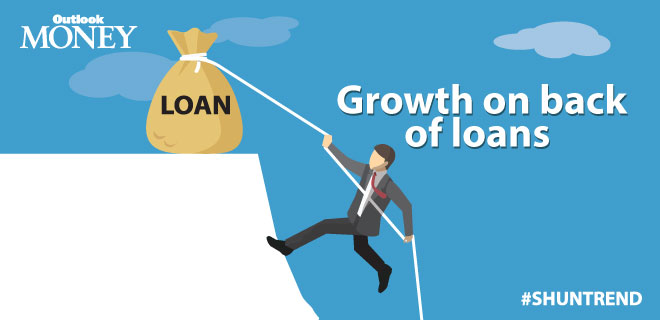When the Banks refuse
P2P lending provides opportunities to both borrowers and lenders, creating a new way to dip for money when needed

What do you do when you need the money and don’t have it? You borrow. What if the bank refuses to lend you? You ask friends or relatives, which is the general trend. However, there are many people today who prefer to keep their borrowing spree away from the glare of family and friend circle scrutiny, thanks to the online peer-to-peer (P2P) lending platforms that exist these days. These platforms are manna for both borrowers and lenders; unlike conventional lending through banks and lending companies, P2P uses informal routes to make credit available to those who need it.
“I had a fabulous job offer from a leading online portal, but I needed money to shift to Bangalore. I decided to try out a P2P lending platform,” reminisces 26-year-old Pranav Saraf, who has managed to repay the loan and gloats over the experience to several of his peers. In the past two years P2P lending has become one of the most talked of Fintech innovations which is yet to fall under the RBI regulations. Fast to pick on the growing tribe of P2Ps, the RBI has put out a consulting paper, which implies that this form of lending will also come under the purview of the regulator soon.
For those who have the money to lend, here is a route to lend and earn on the loan extended. And, for those looking to borrow, because the conventional routes are no more existent for them, there is chance for them to realise their financial dreams. Simply put, P2P is a new method of debt financing that allows people to borrow and lend money without a financial institution. Harnessing technology and big data, P2P platforms connect borrowers to investors faster and cheaper than any bank. The popularity of these platforms is with youngsters, who are yet to find formal lenders opening up to them.
DIY Lending
P2P is more in tune with the young do-it-yourself (DIY) kind of borrowers and lenders. So, first step for you is to go and register yourself on a P2P platform. You then need to put in your loan requirement on the website followed by a legal verification process. “A borrower needs to scan and upload documents for KYC, such as photo, PAN card, Aadhaar card and passport. Then, they need to provide income-related documents such as six months’ bank statement, three months’ salary slip and income tax returns,” explains Bhuvan Rustagi, Co-founder, Lendbox.in.
For 26-year-old Nagpur-based Ishan Kukade, lending on P2P was a business opportunity worth every rupee. “I started lending on the Lendbox platform and have lent more than Rs 25 lakh after carefully examining the profile of each borrower thoroughly,” he says. There are many like him, who use the excess money that they have to lend to those who need and are creating a predictable income stream, as borrowers need to repay regular sums. This way they are able to generate income just the way it is with other forms of investing.
Platform dynamics
The demand for borrowing and lending has resulted in several new entities getting into the setting up of such platforms. There is Finomena, Lendbox, Trustio, SlicePay and Faircent among many others. The platform interface, terms and conditions they apply for borrowers and lenders defines them. “Rather than investing in a single borrower, the rule at Faircent is that no lender can fund more than 20 per cent of a borrower loan requirement which would mean every borrower is funded by minimum five lenders that de-risks the lender,” says Rajat Gandhi, Founder and CEO, Faircent.
To help lenders, platforms also segregate borrower types into different buckets, such as students, fresh recruits and those who do not have a regular income stream. “We collect and analyse 1000 plus online and offline data signals, which helps segment students into different risk profiles and educate our users blatantly about what they’re getting into,” says Deepak Malhotra, Co-founder, Technology and Growth, SlicePay. This micro lending platform offers short term loan to college students to purchase e-commerce products on monthly payment plans.
“We have disbursed more than Rs 4.5 crore at an average interest of around 24 per cent,” acknowledges Rustagi of Lendbox.in. But, there are safety concerns that need to be looked into both when borrowing and at the time of lending. “I start by analysing income, pre-loan and post loan debt to income ratio, expense to income ratio, and average monthly balance in salary account. If these numbers are satisfactory and the person has had job consistency, then I commit,” says Kukade.
Says Pranay Bhardwaj, former Co-founder, Trustio: “We are able to get lenders interested in spite of anonymity because of the close trust circle that alumni from these premier institutes have among each other.” For borrowers, especially those who have been denied loans by the organised lenders, this route to borrowing is very helpful. However, the cost of loan is equally prohibitive and far more than what it costs when one takes a personal loan from a bank.
But people like Saraf say that they are aware of the costs and still prefer to borrow from a P2P, as it permits the freedom to do so, especially when traditional routes are closed for them. “The flexibility to repay Rs 60,000 over three months was lot more favourable,” laughs Saraf. He is not alone, there are several borrowers today on P2P who are trying to put up their need to borrow explicitly and are finding bidders who are willing to lend them.
For now, the concept addresses the needs of both lenders and borrowers. The P2P follows very stringent verification process so that borrowers know that they are interacting with the most genuine lenders and are not going to be hounded by loan sharks. If the formal way to borrowing is not working for you, do not hesitate to try out a P2P. It is not only easy, it will also allow you to test your real credit worthiness, especially for those who have been denied loans.









